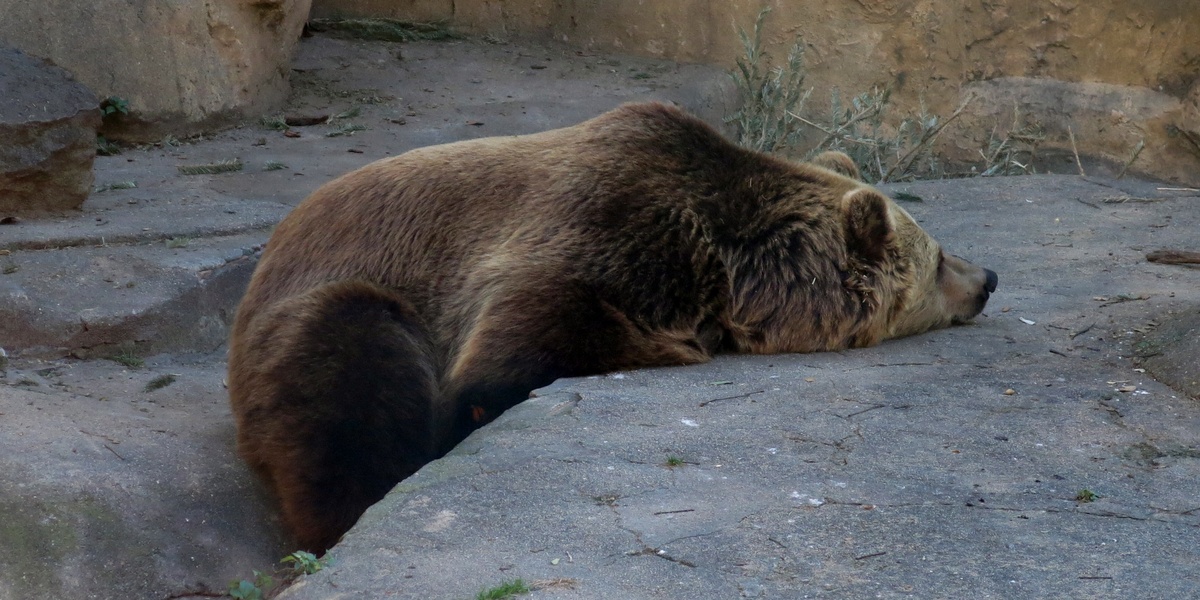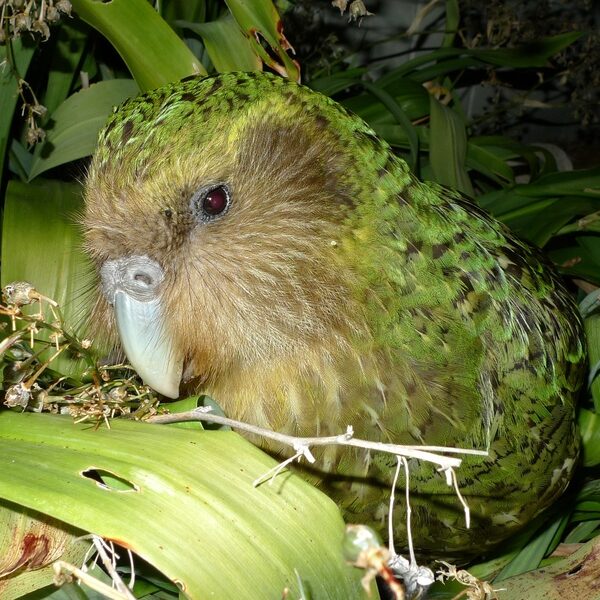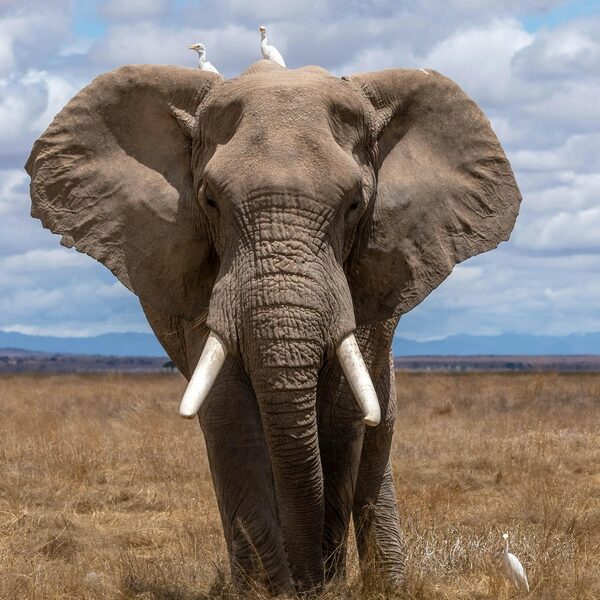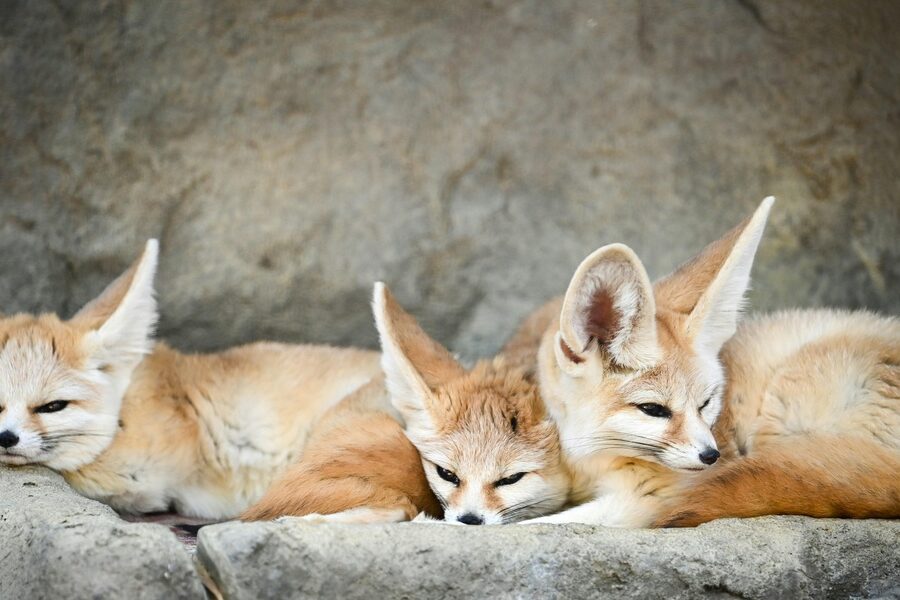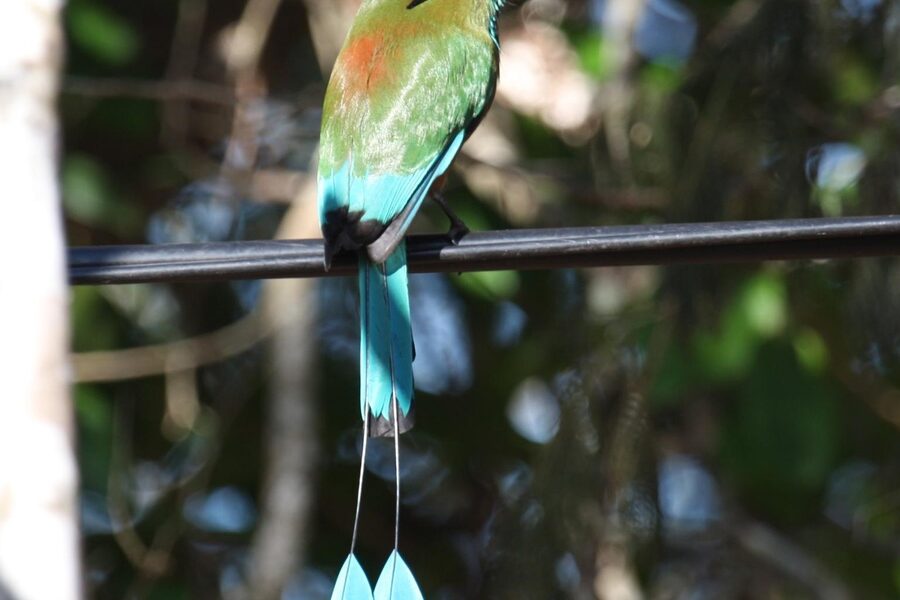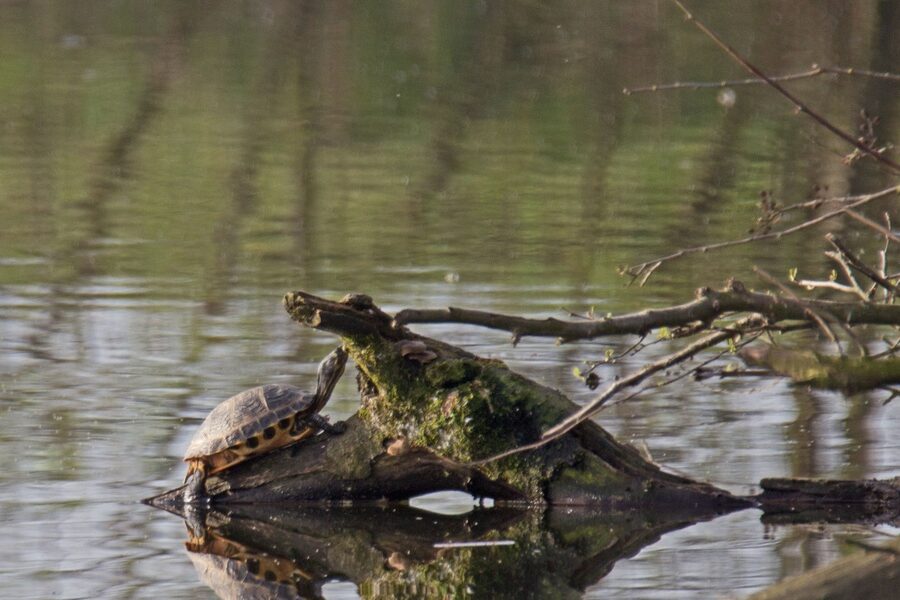The taiga, a vast swath of coniferous forest across the high latitudes, supports a distinctive web of life adapted to long winters and short summers. Seasonal shifts, from deep snow to thawing wetlands, shape which animals thrive and how they move through this stitched-together landscape.
There are 40 taiga consumers, ranging from American Black Bear to Wood Frog, representing predators, herbivores and omnivores found across northern regions. For each species you’ll find below the Scientific name,Trophic role (diet),Range (countries/regions) so you can compare status and ecology at a glance — see the full list you’ll find below.
How should I read the columns (Scientific name, Trophic role (diet), Range (countries/regions))?
Each entry gives the standard scientific name to avoid confusion, a concise trophic role describing typical diet (e.g., insectivore, omnivore, browser), and the geographic range listed by countries or broad regions so you can quickly spot where a species occurs or overlaps with others in the taiga.
Are any of these taiga consumers at conservation risk?
Some species are widespread and stable, while others—especially certain amphibians and localized mammals—face habitat loss, climate shifts, or pollution; check IUCN or regional conservation lists for up-to-date statuses and management recommendations.
Taiga Consumers
| Name | Scientific name | Trophic role (diet) | Range (countries/regions) |
|---|---|---|---|
| Gray Wolf | Canis lupus | Apex carnivore; preys on moose, caribou, deer, and other large herbivores. | Circumpolar in North America and Eurasia, a keystone predator of the taiga. |
| Brown Bear | Ursus arctos | Omnivore; eats berries, nuts, roots, fish (especially salmon), insects, and mammals. | North America (grizzly) and Eurasia, in taiga, tundra, and mountain forests. |
| Siberian Tiger | Panthera tigris altaica | Apex carnivore; preys on wild boar, red deer, moose, and roe deer. | Russian Far East, specifically the Amur-Ussuri region’s taiga forests. |
| Eurasian Lynx | Lynx lynx | Carnivore; primarily preys on roe deer, hares, foxes, and birds. | Widespread across Europe and Asia’s taiga and temperate forests. |
| Canada Lynx | Lynx canadensis | Carnivore; specialist predator of the snowshoe hare, its primary food source. | North American taiga, from Alaska to Canada and the northern United States. |
| Wolverine | Gulo gulo | Carnivore and scavenger; eats carrion, rodents, hares, and even larger prey. | Circumpolar in remote taiga and tundra of North America and Eurasia. |
| Moose | Alces alces | Herbivore; browses on leaves, bark, and twigs from willows, aspen, and birch. | Circumpolar in the taiga of North America (Moose) and Eurasia (Elk). |
| Caribou | Rangifer tarandus | Herbivore; feeds on lichens (reindeer moss), grasses, sedges, and leaves. | Circumpolar taiga and tundra of North America (Caribou) and Eurasia (Reindeer). |
| Snowshoe Hare | Lepus americanus | Herbivore; feeds on grasses and forbs in summer, twigs and bark in winter. | Across the North American taiga and montane forests. |
| North American Beaver | Castor canadensis | Herbivore; feeds on the bark, cambium, and leaves of trees like aspen and willow. | Widespread in rivers, streams, and lakes throughout North American taiga. |
| American Black Bear | Ursus americanus | Omnivore; eats berries, nuts, insects, carrion, and occasionally small mammals. | Forests across North America, including the entire expanse of the taiga. |
| Red Fox | Vulpes vulpes | Omnivore; eats rodents, rabbits, birds, insects, fruits, and berries. | One of the most widespread carnivores, found across the globe including all taiga. |
| Pine Marten | Martes martes | Omnivore/Carnivore; preys on squirrels, voles, birds, and also eats berries and insects. | Taiga and mixed forests of Europe and Western Asia. |
| American Marten | Martes americana | Omnivore/Carnivore; eats red squirrels, voles, hares, birds, insects, and fruit. | Coniferous and mixed forests of North America, especially mature taiga. |
| Fisher | Pekania pennanti | Carnivore; eats snowshoe hares, squirrels, rodents, and is a specialist porcupine predator. | North American taiga and mixed forests, from Canada to the northern U.S. |
| Ermine | Mustela erminea | Carnivore; preys on mice, voles, shrews, and other small rodents. | Circumpolar in taiga and tundra of North America and Eurasia. |
| Red Squirrel | Tamiasciurus hudsonicus | Herbivore/Granivore; primarily eats conifer seeds, but also fungi, buds, and berries. | North American taiga and coniferous forests. |
| Northern Flying Squirrel | Glaucomys sabrinus | Omnivore; eats fungi, lichens, nuts, insects, and bird eggs. | Boreal and temperate forests across North America. |
| North American Porcupine | Erethizon dorsatum | Herbivore; feeds on tree bark, twigs, and buds, especially in winter. | Forests across North America, including the taiga. |
| Great Horned Owl | Bubo virginianus | Apex avian predator; eats hares, skunks, rodents, and other birds. | Widespread across the Americas, a common resident in the taiga. |
| Great Grey Owl | Strix nebulosa | Carnivore; specialist hunter of voles and other small rodents. | Circumpolar taiga of North America and Eurasia. |
| Northern Goshawk | Accipiter gentilis | Carnivore; preys on birds like grouse and jays, and mammals like hares and squirrels. | Circumpolar in taiga and temperate forests of North America and Eurasia. |
| Bald Eagle | Haliaeetus leucocephalus | Carnivore/Piscivore; primarily eats fish, but also waterfowl and carrion. | North America, especially near coasts, rivers, and lakes in the taiga. |
| Common Raven | Corvus corax | Omnivore/Scavenger; eats carrion, grains, insects, bird eggs, and human refuse. | Highly adaptable, found across the Northern Hemisphere including all of the taiga. |
| Boreal Chickadee | Poecile hudsonicus | Insectivore/Omnivore; eats insects, spiders, and conifer seeds. | North American taiga, rarely straying south of the boreal forest. |
| Spruce Grouse | Falcipennis canadensis | Herbivore; specializes in eating conifer needles, especially spruce and pine. | North American taiga and subalpine forests. |
| Ruffed Grouse | Bonasa umbellus | Herbivore/Omnivore; eats buds, leaves, and berries; chicks eat insects. | Deciduous and mixed woods across North America, including southern taiga. |
| Pine Grosbeak | Pinicola enucleator | Herbivore/Frugivore; feeds on buds, seeds, and berries, especially mountain-ash. | Circumpolar in the taiga forests of North America and Eurasia. |
| White-winged Crossbill | Loxia leucoptera | Herbivore/Granivore; specialist feeder on conifer seeds from spruce and tamarack cones. | Circumpolar in the taiga, its movements are nomadic, following cone crops. |
| Boreal Owl | Aegolius funereus | Carnivore; preys on voles, mice, shrews, and small birds. | Circumpolar taiga forests of North America and Eurasia. |
| Northern Shrew | Sorex arcticus | Insectivore; eats insects, centipedes, slugs, and other invertebrates. | North American taiga and northern grasslands. |
| Spruce Budworm | Choristoneura fumiferana | Herbivore; larvae feed on the needles of balsam fir and spruce trees. | Eastern North American taiga and mixed forests. |
| Taiga Mosquito | Aedes spp. | Hematophage (female); females consume blood from mammals and birds for egg development. | Abundant in taiga wetlands and pools across the entire circumpolar region. |
| Bark Beetle | Ips typographus (Eurasia), Dendroctonus spp. (N. America) | Herbivore; larvae bore into and consume the inner bark (phloem) of conifer trees. | Circumpolar in coniferous forests, including the taiga. |
| Common Loon | Gavia immer | Piscivore; eats fish, crustaceans, and other aquatic invertebrates. | Breeds on lakes in the taiga of North America and Greenland. |
| Osprey | Pandion haliaetus | Piscivore; a specialist predator that eats fish almost exclusively. | Global distribution, common breeder on taiga lakes and rivers. |
| American Robin | Turdus migratorius | Omnivore; eats earthworms and insects in spring, fruits and berries in summer/fall. | Widespread in North America, breeding throughout the taiga. |
| Dark-eyed Junco | Junco hyemalis | Omnivore/Granivore; eats seeds and insects, primarily foraged from the ground. | Breeds in coniferous forests across North America, including the taiga. |
| Garter Snake | Thamnophis sirtalis | Carnivore; eats earthworms, slugs, frogs, and other small animals. | Extremely widespread in North America, including southern taiga regions. |
| Wood Frog | Lithobates sylvaticus | Insectivore; eats spiders, beetles, slugs, and other small invertebrates. | Widespread in forests of North America, reaching into the Arctic Circle. |
Images and Descriptions
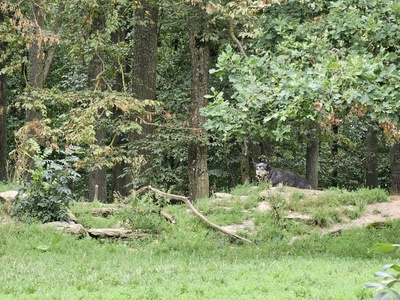
Gray Wolf
A highly intelligent and social predator that hunts in packs. Their howling is an iconic sound of the northern wilderness, and they play a crucial role in regulating herbivore populations, which helps maintain forest health and biodiversity.
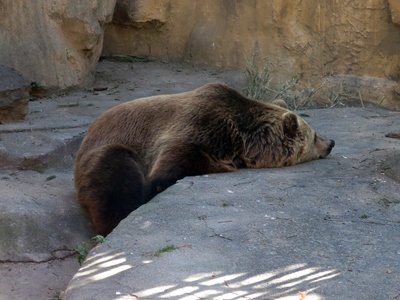
Brown Bear
An enormous and powerful omnivore with a distinctive shoulder hump. While they can be formidable predators, a large part of their diet consists of vegetation and fish, especially during seasonal salmon runs in coastal taiga regions.
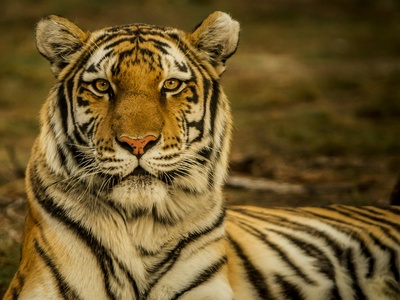
Siberian Tiger
The world’s largest cat, perfectly adapted to the harsh taiga. With its thick fur and massive paws, it stalks large prey through the snowy forests. It is an endangered species, representing the top of the food chain in its limited range.
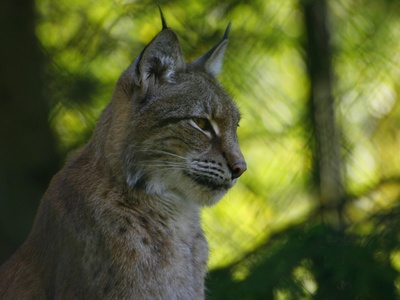
Eurasian Lynx
A secretive, medium-sized wild cat with tufted ears and large, snowshoe-like paws. It’s a stealthy ambush predator that relies on its excellent hearing and sight to hunt, often stalking its prey from dense cover.
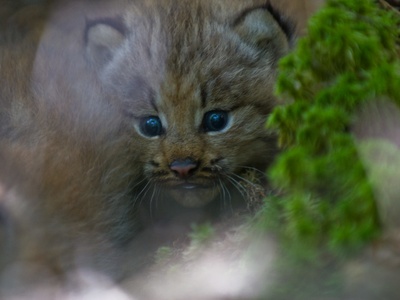
Canada Lynx
Famous for its tufted ears and oversized, furry paws that act like snowshoes. Its population cycles are closely tied to the 10-year boom-and-bust cycle of the snowshoe hare, making it a classic example of predator-prey dynamics.
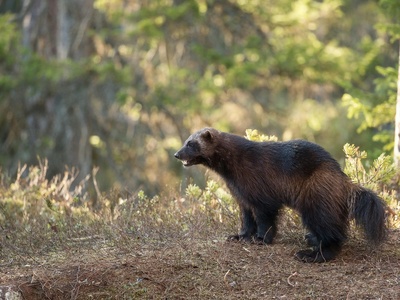
Wolverine
Known for its legendary ferocity and strength disproportionate to its size. This solitary member of the weasel family is a tireless traveler, capable of taking down prey much larger than itself and covering vast, rugged territories.
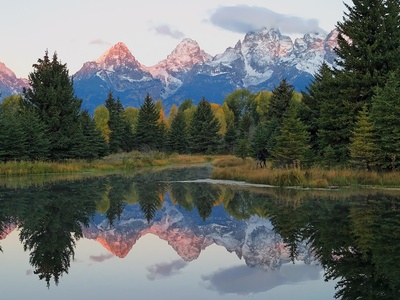
Moose
The largest member of the deer family, standing over 2 meters tall at the shoulder. Its massive palmate antlers and long legs are adaptations for navigating deep snow and dense forests, where it feeds on woody vegetation year-round.
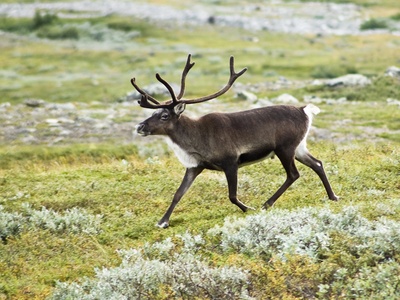
Caribou
The only deer species where both males and females grow antlers. Caribou undertake some of the longest land migrations on Earth, moving between tundra breeding grounds and taiga wintering grounds to find their primary food source, lichens.
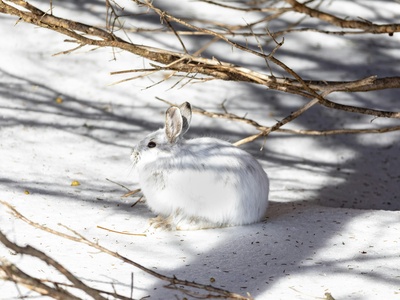
Snowshoe Hare
A master of camouflage, its coat changes from brown in summer to white in winter. Its large hind feet act like snowshoes, allowing it to travel easily over deep snow. It is a critical food source for many predators, like the Canada lynx.
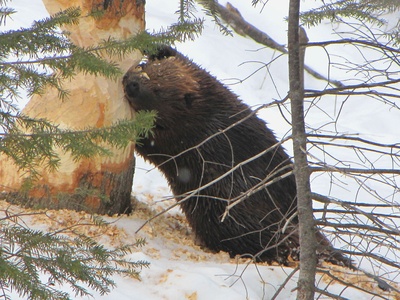
North American Beaver
A keystone species known as an “ecosystem engineer” for its ability to build dams. By creating ponds and wetlands, beavers transform landscapes, creating rich habitats for countless other species, from fish and frogs to waterfowl and moose.
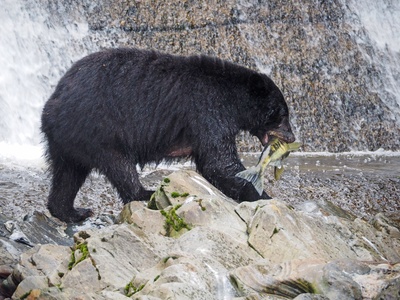
American Black Bear
Smaller and more common than the brown bear, it is an incredibly adaptable omnivore. An excellent climber, it often escapes danger by scaling trees. Its diet varies dramatically with the seasons, relying heavily on summer berries and autumn nuts.
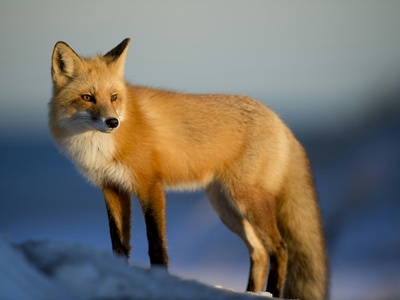
Red Fox
Highly adaptable and clever, the red fox thrives in a variety of habitats, including the boreal forest. It is a skilled hunter with keen hearing, able to detect rodents moving under the snow and pounce on them from above.
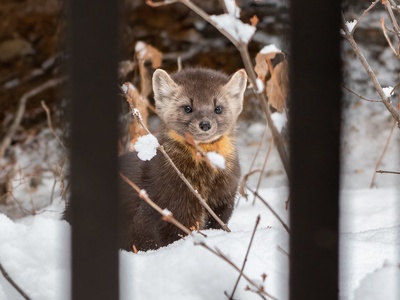
Pine Marten
A slender and agile member of the weasel family, beautifully adapted for a life in the trees. It is a skilled hunter, capable of pursuing red squirrels through the forest canopy with incredible speed and agility.
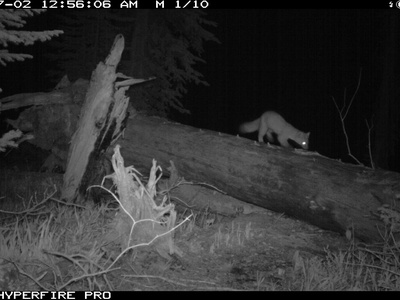
American Marten
A close relative of the Eurasian Pine Marten, this agile predator is a key component of the North American boreal forest food web. It prefers old-growth forests with complex structures that provide ample hunting grounds and denning sites.
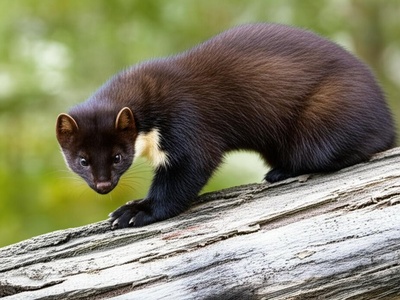
Fisher
A large, dark member of the weasel family, renowned for its speed and agility. It is one of the few predators capable of consistently preying on the well-defended North American porcupine, which it attacks with quick strikes to the face.
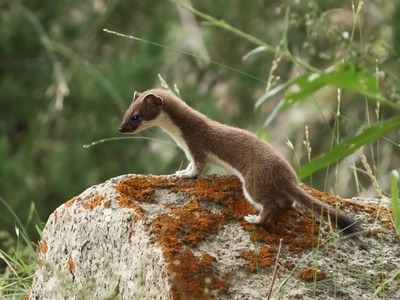
Ermine
Also known as the stoat, this small, fierce predator changes its coat from brown to pure white in winter for camouflage. Its boundless energy and slender body allow it to hunt rodents in their own burrows, even under deep snow.
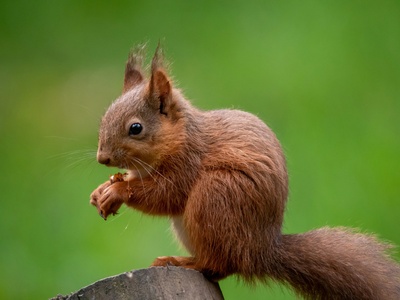
Red Squirrel
A highly energetic and vocal inhabitant of the boreal forest. It is famous for creating large stockpiles of conifer cones, called middens, in preparation for the long, harsh winters. These middens are a vital food source.
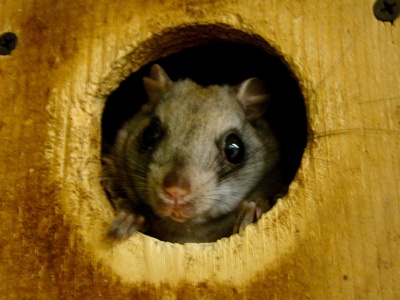
Northern Flying Squirrel
A nocturnal glider, not a true flyer. It uses a furry membrane between its wrists and ankles to glide between trees, navigating the forest at night. It plays a key role in dispersing the spores of mycorrhizal fungi, which are vital for tree health.
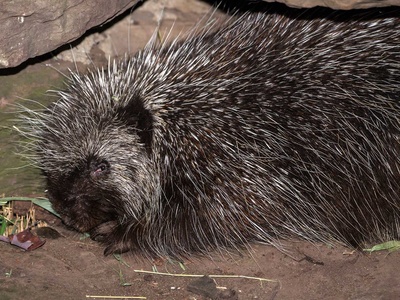
North American Porcupine
A slow-moving but well-defended rodent covered in up to 30,000 sharp quills. It is an adept climber, spending much of its time in trees feeding on the inner bark, which can sometimes damage or kill the trees.
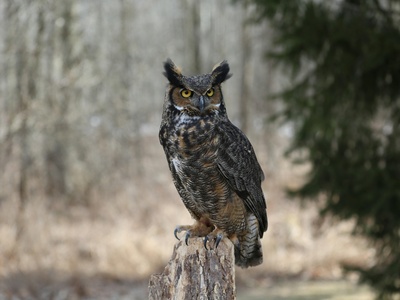
Great Horned Owl
A large and powerful owl with distinctive ear tufts (“horns”). Its silent flight and powerful talons make it a formidable nocturnal hunter. It is one of the few animals that will readily prey on skunks.
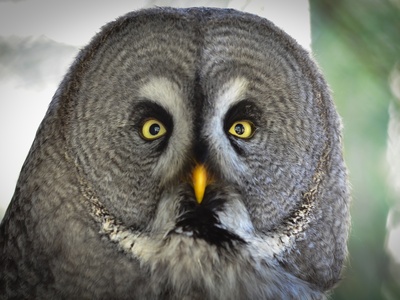
Great Grey Owl
One of the world’s largest owls by length, with a huge facial disc that funnels sound to its ears. This allows it to hunt by hearing alone, plunging feet-first into deep snow to catch rodents moving in tunnels below.
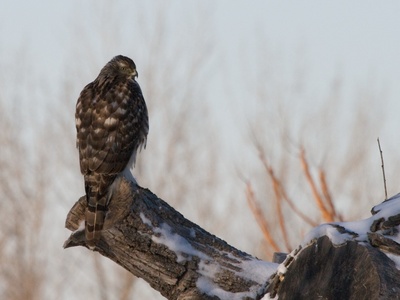
Northern Goshawk
A powerful and aggressive forest hawk with incredible agility. It is a master of high-speed pursuit through dense woods, weaving between trees to catch its prey by surprise. It is a fierce defender of its nest site.
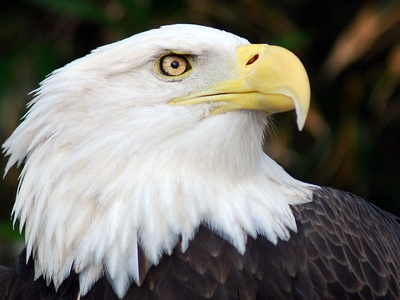
Bald Eagle
The national bird of the United States, this massive bird of prey is a common sight near boreal lakes and rivers. It builds enormous nests in old-growth trees and is known for its soaring flight and keen eyesight for spotting fish.
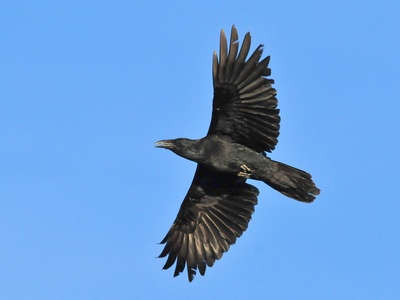
Common Raven
An incredibly intelligent and resourceful bird, often seen in pairs or family groups. Known for its complex vocalizations and problem-solving abilities, it thrives in the harsh taiga by being a versatile forager and scavenger.
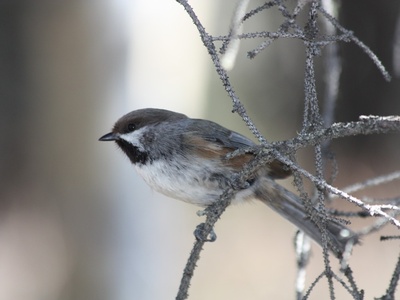
Boreal Chickadee
A small, hardy songbird perfectly adapted to the cold. Unlike many birds, it remains in the taiga year-round, surviving the winter by caching thousands of seeds and insects and remembering their locations with remarkable spatial memory.
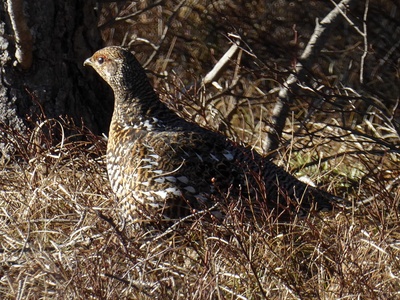
Spruce Grouse
A well-camouflaged, chicken-like bird often called the “fool hen” for its tame nature. Its specialized digestive system allows it to survive the winter almost exclusively on a diet of unpalatable conifer needles.
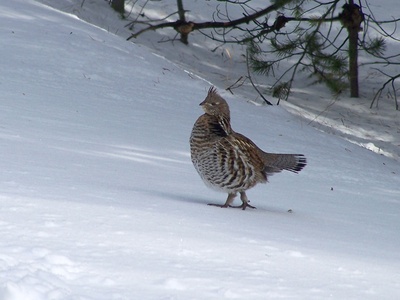
Ruffed Grouse
Known for the explosive sound of its wings when flushed and the deep, drumming sound males make to attract mates. It is a popular game bird and an important prey species for predators like the Northern Goshawk.
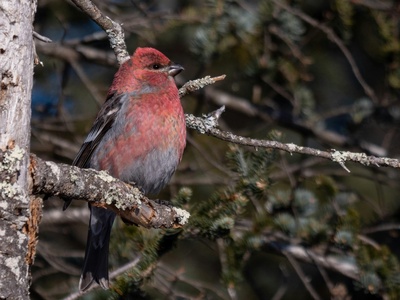
Pine Grosbeak
A large, placid finch, with males displaying a beautiful rosy-red plumage. It is often seen in small flocks during the winter, feeding quietly on remnant berries and tree buds. Its large bill is adapted for crushing seeds.
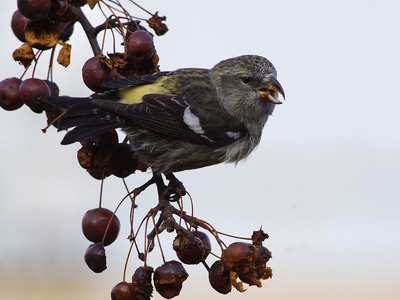
White-winged Crossbill
A fascinating finch with a unique crossed bill used to pry open conifer cones to extract seeds. Its populations are irruptive, meaning they wander widely and unpredictably in search of abundant cone crops, their primary food source.
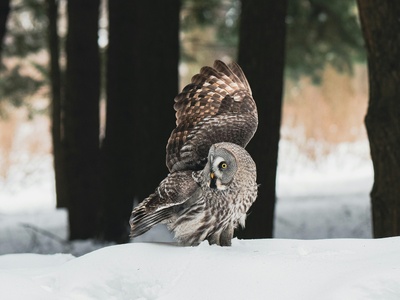
Boreal Owl
A small, nocturnal owl with a surprised expression due to its large, white-rimmed facial discs. It is a secretive and rarely seen hunter of the deep boreal forest, relying on its exceptional hearing to locate prey in the dark.
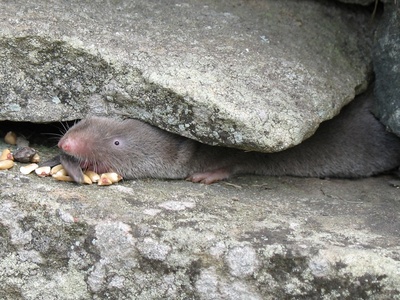
Northern Shrew
A tiny mammal with an incredibly high metabolism, requiring it to eat constantly to survive. It lives a fast-paced life in the leaf litter, using its long snout to probe for insects and other small prey, often consuming its own body weight in food daily.
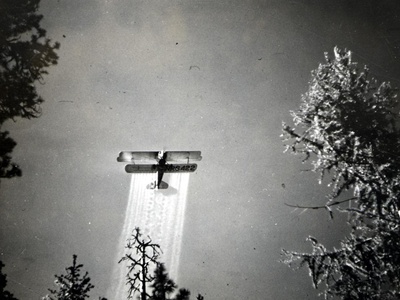
Spruce Budworm
An insect that is a major ecological force in the boreal forest. In outbreak years, these caterpillars can defoliate millions of hectares of forest, which impacts the entire ecosystem, influencing fire cycles and bird populations.
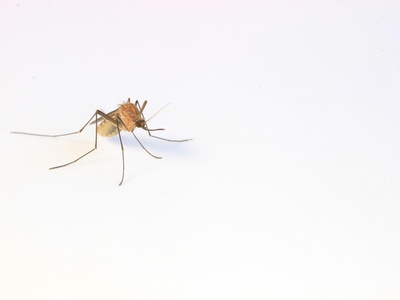
Taiga Mosquito
Infamous for forming massive swarms in the short taiga summer. While a nuisance, they are a critical food source for birds, dragonflies, and fish, and are important pollinators for some northern plants like orchids.
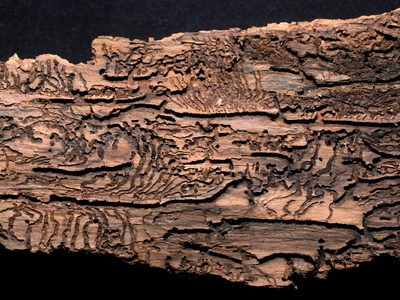
Bark Beetle
Small beetles that play a huge role in forest dynamics. Under certain conditions, their populations can explode, killing vast areas of trees. This process, while destructive, is a natural part of forest renewal and succession.
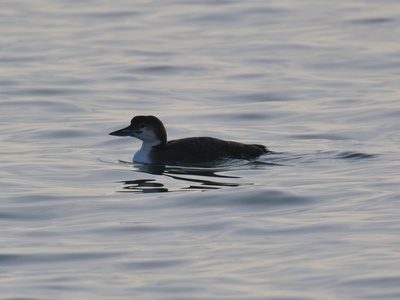
Common Loon
An iconic bird of northern lakes, known for its haunting, yodeling calls. A superb diver, it propels itself underwater with its feet to chase down fish. Its legs are so far back on its body that it is unable to walk on land.
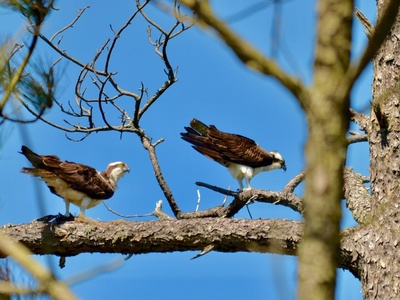
Osprey
A large hawk-like bird, also known as the “fish hawk.” It can be seen soaring over boreal waterways before dramatically plunging feet-first into the water to snatch fish with its specialized, barbed talons.
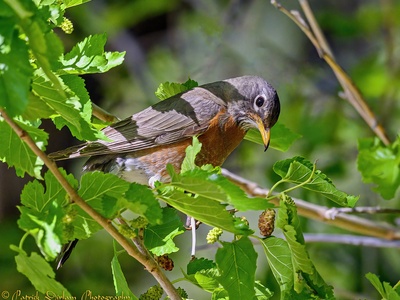
American Robin
A familiar sign of spring, many robins migrate to the taiga to breed during the short, insect-rich summer. They are versatile foragers, pulling worms from the ground in open areas and feeding on the abundant wild berries later in the season.
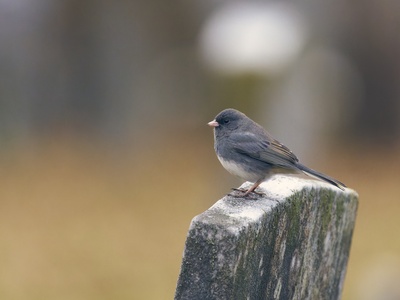
Dark-eyed Junco
A common small sparrow, often called a “snowbird.” Different populations have varying color patterns. In the taiga, it forages on the forest floor for fallen seeds and insects, playing an important role in the understory food web.
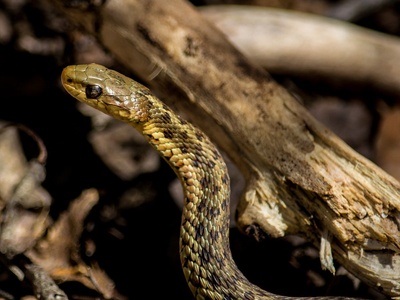
Garter Snake
One of the few reptiles able to survive the cold northern climates of the taiga. It hibernates in large communal dens, called hibernacula, to survive the long, freezing winters, emerging in spring to hunt small prey.
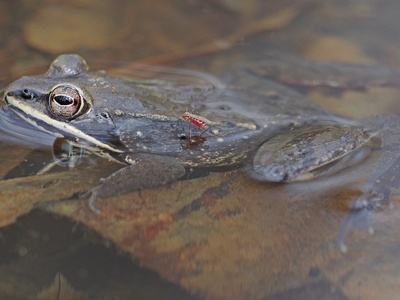
Wood Frog
An amazing amphibian with a remarkable adaptation to cold. It can survive being frozen solid during the winter by producing a natural antifreeze (glucose) in its cells. In spring, it thaws out and heads to vernal pools to breed.
